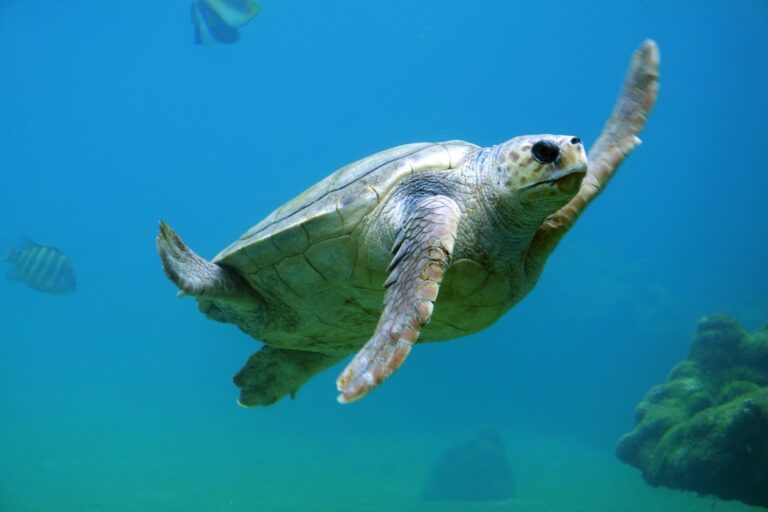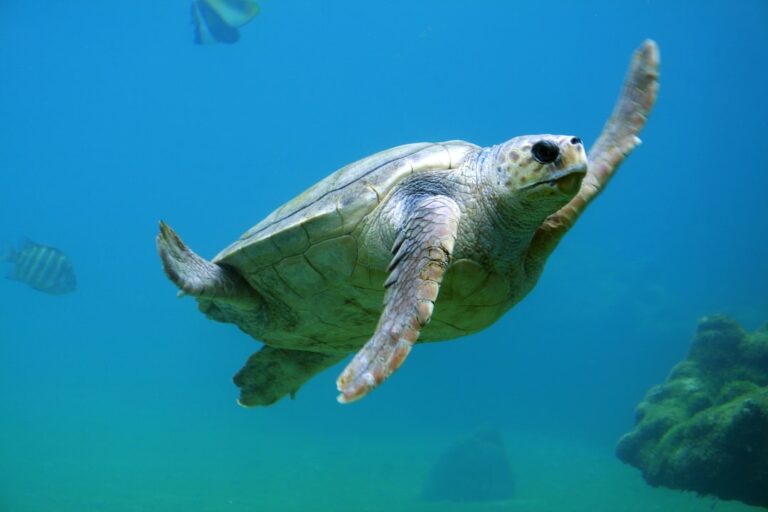Why Do Turtles Poop In Water?
Understanding turtle excretion habits is crucial for several reasons. Firstly, it allows us to gain insight into the overall health and well-being of turtles. By studying their excretion patterns, we can identify any potential health issues or dietary imbalances that may be affecting them. Secondly, understanding turtle excretion habits helps us to better care for these creatures in captivity. By replicating their natural excretion habits, we can create a more suitable and comfortable environment for them. Lastly, studying turtle excretion habits provides valuable information about the role of turtles in their ecosystems and the impact they have on nutrient cycling.
Table of Contents
The Anatomy of a Turtle’s Digestive System
A turtle’s digestive system consists of several parts that work together to break down food and absorb nutrients. The process begins in the mouth, where turtles use their beak-like jaws to bite and tear food. From there, the food travels down the esophagus and into the stomach, where it is broken down further by stomach acid.
After leaving the stomach, the partially digested food enters the small intestine, where most of the nutrient absorption takes place. The small intestine is lined with tiny finger-like projections called villi, which increase the surface area available for nutrient absorption. From the small intestine, any undigested material passes into the large intestine, where water is absorbed and waste products are formed.
The Role of Water in a Turtle’s Life
Water is essential for turtles for several reasons. Firstly, turtles rely on water to stay hydrated. They obtain water through drinking and through their food, which often contains a significant amount of moisture. Turtles also regulate their hydration levels by absorbing water through their skin and cloaca.
Water is also important for turtles’ thermoregulation. Many turtle species bask in the sun to raise their body temperature, and they often cool off by immersing themselves in water. This behavior helps them maintain their body temperature within a suitable range.
Benefits of Excreting in Water
Excreting in water provides several benefits for turtles and their environment. Firstly, it helps to keep their habitat clean. By excreting in water, turtles prevent waste buildup on land, which can lead to unsanitary conditions and the spread of disease. Additionally, excreting in water allows turtles to easily eliminate waste without expending much energy.
Furthermore, turtle waste plays an important role in nutrient cycling. Turtle waste contains valuable nutrients such as nitrogen and phosphorus, which are essential for plant growth. When turtles excrete in water, these nutrients are released into the environment, where they can be taken up by aquatic plants and other organisms. This contributes to the overall health and productivity of the ecosystem.
How Turtles Keep Their Habitat Clean
Turtles play an important role in keeping their environment clean. They are known as “ecosystem engineers” because they modify their habitat in ways that benefit other species. For example, turtles help to control the population of certain aquatic plants by feeding on them. This prevents the plants from overgrowing and choking out other species.
Turtles also help to keep their habitat clean by consuming carrion and dead plant material. By doing so, they prevent the buildup of decaying organic matter, which can lead to poor water quality and the spread of disease.
Maintaining a healthy habitat is crucial for turtles’ survival. A clean and well-balanced ecosystem provides them with ample food sources, suitable nesting sites, and protection from predators.
The Importance of Turtle Waste in Ecosystems
Turtle waste plays a vital role in the health of ecosystems. When turtles excrete in water, they release nutrients such as nitrogen and phosphorus into the environment. These nutrients are essential for plant growth and are often limiting factors in aquatic ecosystems.
Aquatic plants take up these nutrients from the water, using them to fuel their growth. In turn, these plants provide food and habitat for other organisms, such as fish and invertebrates. The presence of turtles in an ecosystem helps to cycle these nutrients, ensuring that they are available for all organisms to use.
Turtle waste also contributes to soil health. When turtles excrete on land, their waste decomposes and releases nutrients into the soil. This enriches the soil and promotes the growth of plants, which in turn provide food and shelter for other organisms.
Differences in Excretion Habits Among Turtle Species
Different turtle species have varying excretion habits, which are often related to their habitat and diet. For example, aquatic turtles tend to excrete more frequently in water, as they spend most of their time there. They may also have adaptations that allow them to excrete more efficiently in an aquatic environment.
On the other hand, terrestrial turtles may excrete on land more often. This is because they spend most of their time on land and may have adaptations that allow them to conserve water by excreting less frequently.
Diet also plays a role in excretion habits. Turtles that consume a high-fiber diet may produce more waste and excrete more frequently. Conversely, turtles that consume a low-fiber diet may produce less waste and excrete less frequently.
The Relationship Between Diet and Excretion
A turtle’s diet has a significant impact on its excretion habits. Turtles that consume a high-fiber diet, such as herbivorous species, produce more waste and excrete more frequently. This is because fiber is indigestible and passes through the digestive system relatively unchanged.
On the other hand, turtles that consume a low-fiber diet, such as carnivorous species, produce less waste and excrete less frequently. This is because their diet consists mainly of easily digestible animal protein, which is efficiently absorbed by the body.
A balanced diet is crucial for healthy excretion. Turtles should be provided with a variety of foods that meet their nutritional needs. This includes a mix of animal protein, plant matter, and commercial turtle pellets. Providing a balanced diet ensures that turtles can efficiently digest their food and produce waste in appropriate amounts.
The Effects of Pollution on Turtle Excretion
Pollution has a detrimental effect on turtle excretion habits and overall health. Water pollution, in particular, can lead to poor water quality, which can negatively impact turtles’ ability to obtain water and regulate their hydration levels.
Pollutants such as pesticides, heavy metals, and industrial chemicals can accumulate in turtles’ bodies over time. This can lead to a variety of health issues, including kidney and liver damage, reproductive problems, and weakened immune systems.
Pollution also affects the availability of food sources for turtles. Contaminated water can lead to the death of aquatic plants and animals, reducing the availability of food for turtles. This can result in malnutrition and poor overall health.
Understanding and Respecting Turtle Excretion Habits
In conclusion, understanding turtle excretion habits is crucial for several reasons. It allows us to monitor their health and well-being, create suitable environments for them in captivity, and gain insight into their role in ecosystems.
Turtles play an important role in nutrient cycling and maintaining a healthy habitat. By excreting in water, they contribute valuable nutrients to the environment, which are essential for plant growth and the overall health of aquatic ecosystems.
It is important to respect and protect turtle habitats and their waste products. This includes minimizing pollution and maintaining clean water sources. By doing so, we can ensure the continued survival and well-being of these fascinating creatures.
If you’re curious about the fascinating world of reptiles, you might be interested in learning more about iguanas. Did you know that iguanas have mammary glands? Find out more about this intriguing topic in our article, “Do Iguanas Have Mammary Glands?“. Discover the unique characteristics and behaviors of these reptiles as we delve into their anatomy and reproductive systems.







